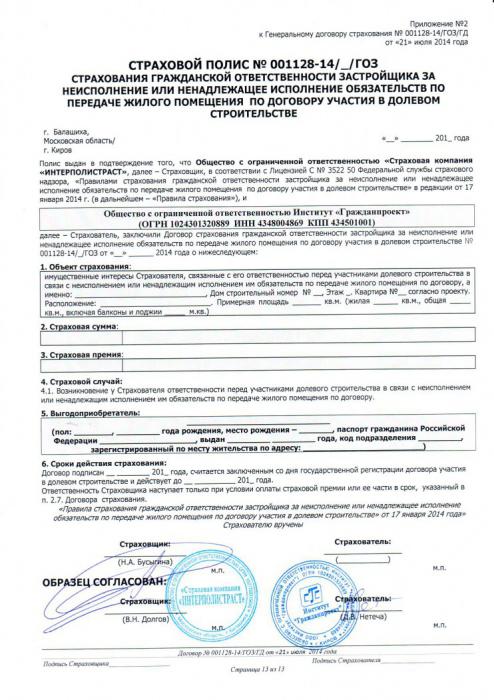The insurance contract is a good compromise between the dry statistics of unforeseen situations and the balance of payments of the insured. As a rule, in order to get insurance, the underwriter indicates an unlikely event that may occur in the future. But there are areas of business in which insured events occur even before the conclusion of the contract. Then these papers subscribe to the so-called retroactive period.

Definition and action
Contracts are drawn up by lawyers, which means that many of the clauses of standard agreements are difficult to understand for people with non-legal education. If you try to explain what a retroactive insurance period is, in simple words, you can clearly imagine such an example.
You are waiting for a harvest of apples from your garden. But you suspect that your apple trees could have been infected last season by a bug, whose larvae make the trees barren. You enter into an insurance contract in which insurance case there will be a possible infection of the garden that occurred last season. Please note: you do not insure the crop failure itself, but its possible cause. If in the summer you do not wait for apples and the reason for this is a bug that damaged trees, you will receive insurance compensation.
Who enters retroactive insurance
The conclusion of retroactive insurance agreements is a standard practice for SRO insurance (surveyors, builders or contractors). But a similar form can be used in any other contracts: from insurance of financial risks to various agricultural contracts.
The main condition for insurance compensation is a clearly defined retroactivity clause. If the parties only imply the start date of the insurance agreement in the previous period, but there is no fixed reference to this clause in the contract, then compensation may be refused to the insured person.
What does a retroactive insurance contract look like?
In addition to the standard clauses listing the occurrence of insured events, insurance for the previous period can be concluded in two forms:
- The annual period of the report of the insurance period. In this case, the insurance period is calculated from the date the construction organization was allowed to start work. The cause of the damage found, falling under the definition of an insured event, must arise no earlier than three years before the conclusion of the insurance contract.
- Project insurance base. In this case, the retroactive insurance period begins from the moment of the official start of work on the construction of the construction object.
Mandatory clauses of the insurance contract
Before the final signing of the insurance agreement, the parties must first record in writing the start date of the insurance period. Most often, insurance companies charge an additional bonus in the amount of 10-20% of the total contribution for an additional clause of the contract. But in the construction business, such a clause insures against further significant property and reputational costs, when due to poor-quality construction materials or a mistake of the design team, the house may collapse.
The retroactive insurance period is not only an additional guarantee of quality, but also shifting the possible significant costs of judicial payments to future residents onto the shoulders of the insurance company.

How retroactive insurance works
Basically, retroactive insurance is in the interests of the construction company.In the event of an insured event, the final recipient of the insurance (legal or natural person) is obliged to prove that the insured event occurred and payment should be made.
Controversial cases must be considered by construction experts working on behalf of the court. If the tragedy was caused by shortcomings and errors not only of suppliers of building materials and designers, but also of the builders themselves, the case will be referred to the arbitration court, which, on the basis of an expert opinion, will give a legal assessment of the actions of the perpetrators and issue a final verdict, according to which it will (or will not) be negotiated compensation payment.

Past years and insurance fraud
An insurance contract that includes a past period can be fraught with many tricks used by various scammers. For example, at the initial stages of construction, contractors are informed about shortcomings in the design documentation. Despite this, the construction of the facility continues, and the company’s administration concludes an insurance contract with a retroactive period, hoping in the event of an emergency to safely “float out” of the situation, taking insurance compensation with it.

Such cases have become quite common, so insurers try to protect themselves from lawsuits by dishonest contractors in various ways. In addition to the increased insurance premium, some insurers resell retroinsurance to other companies. Many of them require direct participation in the work on the object of their experts.
There are a lot of options, but one thing is clear: if the lawyers of the insurance company prove in court that the insured person received information about the violations in advance, but did not take care to eliminate them, such a company will not receive any insurance. The actions of the administration of such a company will be regarded as fraud on an especially large scale and not prosecuted under the Civil Procedure Code, but under the Criminal Code.
As you can see, the retroactive insurance period is not very difficult to understand. It is enough to know that in this case the unsatisfactory result of work is insured (in the general case, the destruction of the finished building). The reason for insurance is the reasons that arose in the past, but having a direct impact on the final result. BUT compensation payments in this case, they are called upon to mitigate the final consequences of incorrect actions committed for a long time.
